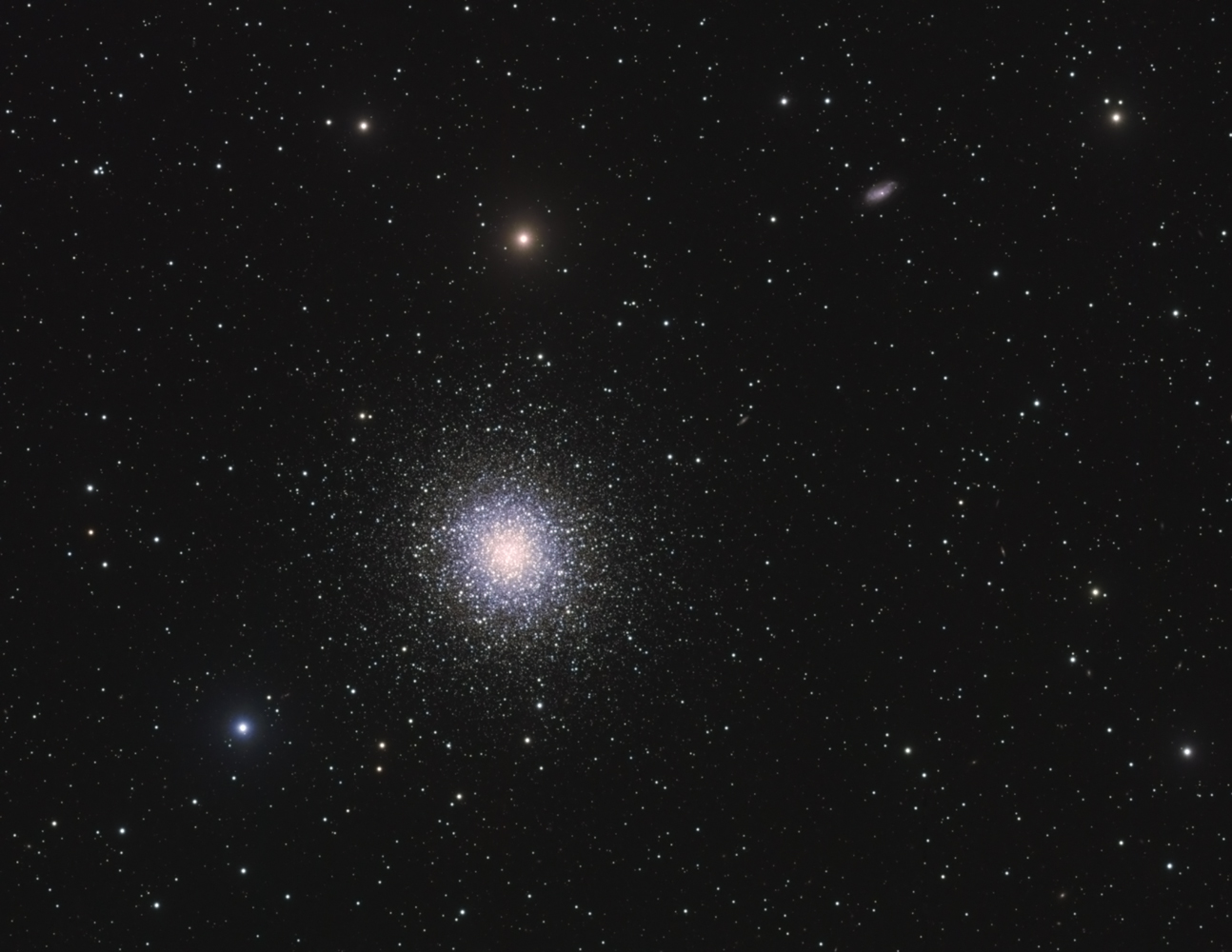
Discovered by Edmond Halley in 1714.
M13, also called the `Great globular cluster in Hercules', is one of the most prominent and best known globulars of the Northern celestial hemisphere. It was discovered by Edmond Halley in 1714, who noted that `it shows itself to the naked eye when the sky is serene and the Moon absent.' According to Charles Messier, who cataloged it on June 1, 1764, it is also reported in John Bevis' "English" Celestial Atlas.
At its distance of 25,100 light years, its angular diameter of 20' corresponds to a linear 145 light years - visually, it is perhaps 13' large. It contains several 100,000 stars; Timothy Ferris in his book Galaxies even says "more than a million". Towards its center, stars are about 500 times more concentrated than in the solar neighborhood. The age of M13 has been determined by Sandage as 24 billion years and by Arp as 17 billion years around 1960; Arp later (in 1962) revised his value to 14 billion years (taken from Kenneth Glyn Jones).
According to Kenneth Glyn Jones, M13 is peculiar in containing one
young blue star, Barnard No. 29, of spectral type B2. The membership of
this star was confirmed by radial velocity measurement, and is strange
for such an old cluster - apparently it is a captured field star.
-------------------------------